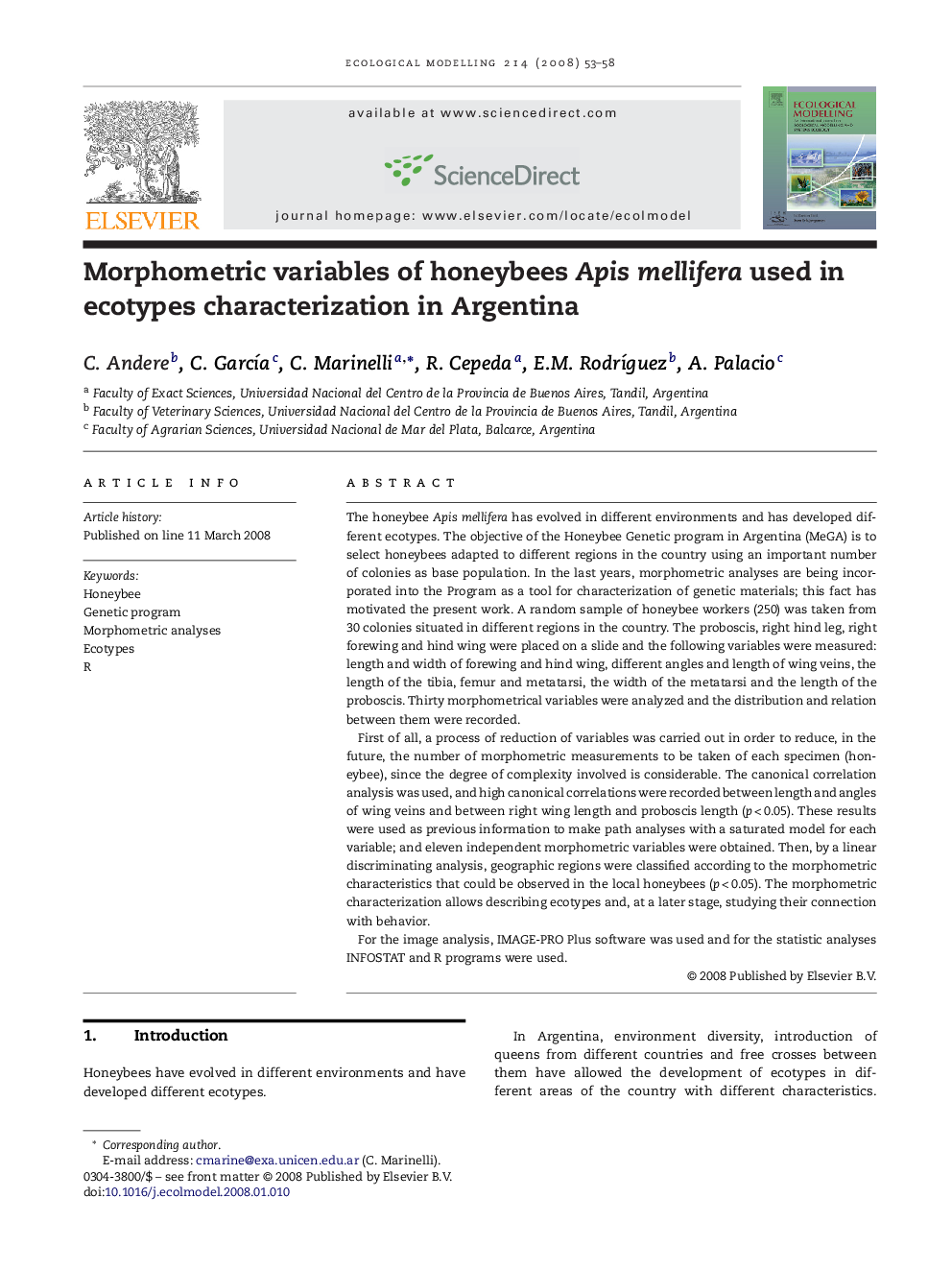| Article ID | Journal | Published Year | Pages | File Type |
|---|---|---|---|---|
| 4378151 | Ecological Modelling | 2008 | 6 Pages |
The honeybee Apis mellifera has evolved in different environments and has developed different ecotypes. The objective of the Honeybee Genetic program in Argentina (MeGA) is to select honeybees adapted to different regions in the country using an important number of colonies as base population. In the last years, morphometric analyses are being incorporated into the Program as a tool for characterization of genetic materials; this fact has motivated the present work. A random sample of honeybee workers (250) was taken from 30 colonies situated in different regions in the country. The proboscis, right hind leg, right forewing and hind wing were placed on a slide and the following variables were measured: length and width of forewing and hind wing, different angles and length of wing veins, the length of the tibia, femur and metatarsi, the width of the metatarsi and the length of the proboscis. Thirty morphometrical variables were analyzed and the distribution and relation between them were recorded.First of all, a process of reduction of variables was carried out in order to reduce, in the future, the number of morphometric measurements to be taken of each specimen (honeybee), since the degree of complexity involved is considerable. The canonical correlation analysis was used, and high canonical correlations were recorded between length and angles of wing veins and between right wing length and proboscis length (p < 0.05). These results were used as previous information to make path analyses with a saturated model for each variable; and eleven independent morphometric variables were obtained. Then, by a linear discriminating analysis, geographic regions were classified according to the morphometric characteristics that could be observed in the local honeybees (p < 0.05). The morphometric characterization allows describing ecotypes and, at a later stage, studying their connection with behavior.For the image analysis, IMAGE-PRO Plus software was used and for the statistic analyses INFOSTAT and R programs were used.
